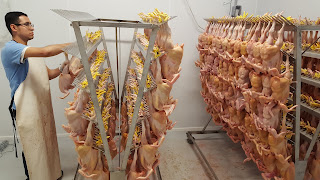"The Bread of the Church"
by: fr. Rich Rome, OFM Conv.
On our
third day in Bogota, we went down to the city center to walk through the
streets and see the capitol. We visited
a museum honoring those who were killed or disappeared during the civil war,
two cemeteries where those killed were buried, and then past several of the
major government buildings, and about a half dozen churches. The churches were all grand: many altars,
many statues, many candles, beautiful ceilings.
And at the door of every church were those begging.
On our
fourth day, we went to the south part of the city, which is one of the poorest
areas. When many of the older people
were born, this part of the city didn’t exist.
It was created by the influx of those from the countryside fleeing from
the violence between the FARC and government.
The city didn’t build the houses, or the roads, or the pathways. The people who lived there built them. They maintained them. They still maintain them – the city will
sometimes provide materials, but not always.
The
parish church in this pueblo stood out: one altar, two statues, the only candle
was the sanctuary lamp, and the ceiling was sheet metal. There was no artwork, but none was needed -
the windows behind the sanctuary provided a panoramic view of Bogota and the
Andes. But there were also no beggars.
Several
of the parishioners described the history of their church. When the parish first incorporated, the
church site was all made of sheet metal and was open to the elements. Eventually they raised enough money to buy
the materials to enclose it with brick and some simple windows. To raise the money, members of the parish
started their own small businesses through the church. “Tamales and hot chocolate…that’s what built
this.” Others learned how to bake or to sew and were able to get their machines
through the church. The money came back
to the church to cover the needs of the workers and the parish – basically a
giant co-op. When they sold their bread
around town (inside and outside the pueblo), people would ask, “Is this the
bread of the church?”, preferring the parishioners’ bread over the commercial
bakery.
The
other thing that hit me while speaking with the parishioners was how they
talked about their sewing machines and bread ovens: “our machines”. Many times, in many places during our trip,
we’ve heard about how the local industry, which had employed so many people
(mining, dress making, chicken processing), went under and left the town
destitute. I think of all the machines
that were used in those places and how the people were just being used to keep
the machines going – the machines owned them.
This was the opposite; they own their machines.
In
hearing them talk this way, you hear that they were empowered through the
church and they rose up out of poverty to create a better world. They are the church. It’s not just a building – its all of
them. The “bread of the church” is not
only the Eucharist, but the Word of God that they, as church, have taken to
heart and live out on the streets that they themselves have made. Many of the parishioners are moving away to
other pueblos, but they are taking this experience with them as they go out to
raise up the rest of the city.




Comments
Post a Comment